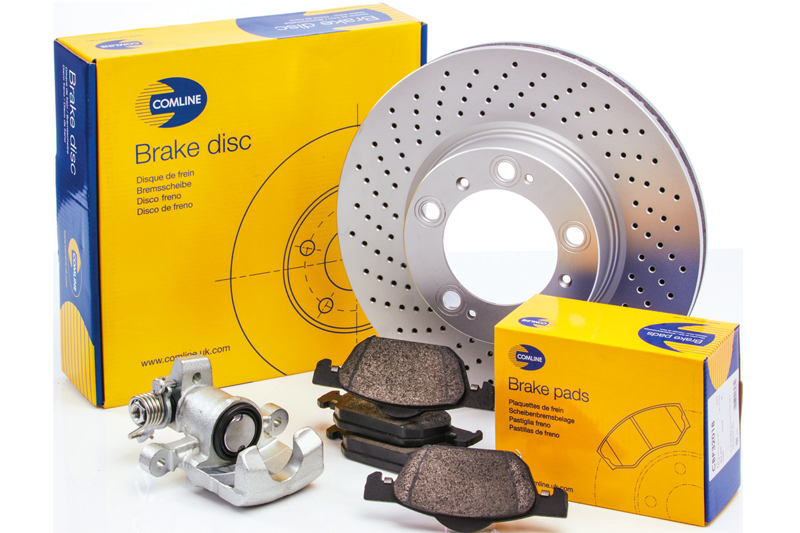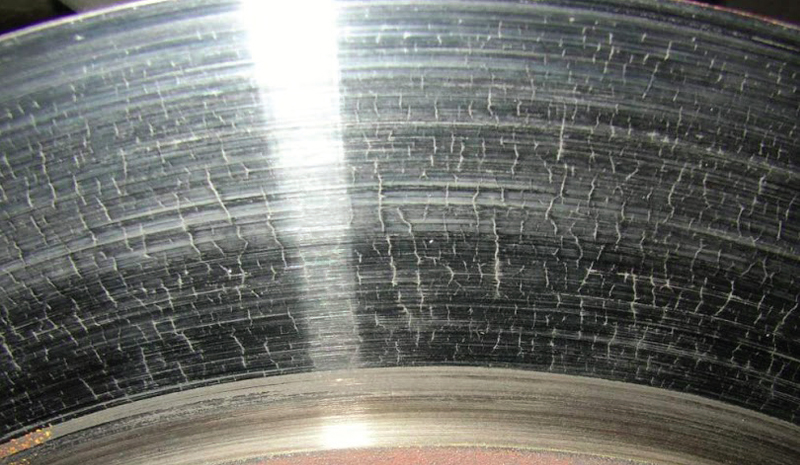
Staying informed about the latest developments in car parts and repair is paramount to providing a premium service. In this article, Comline delves into the intriguing phenomenon of brake disc ‘crazing’.
Technicians, imagine a scenario where you are inspecting a vehicle’s brake disc and notice an unusual pattern on its braking surface: a cluster of small, hairline cracks resembling ‘orange peeling’ or the appearance of crazy paving. This phenomenon is what experts refer to as brake disc ‘crazing’. These clusters of cracks can vary in size and are particularly noticeable, especially on vehicles with open-style alloy wheels.
So, what’s causing it? Essentially, it’s a telltale sign that the brake disc has been subjected to high temperatures, indicating that the driver has been pushing their brakes to their limits, quite literally driving their brakes crazy.
It’s crucial to understand that ‘crazing’ is not necessarily indicative of a quality issue with the brand of brake disc chosen for the vehicle. Instead, it’s an occurrence that affects all traditional cast metal brake discs when exposed to high temperatures. The good news is that these cracks are typically superficial and should not pose any serious issues beyond their unsightly appearance.

However, Comline emphasises the importance of a professional mechanic supporting motorists with a thorough inspection and expert diagnosis, as there are other types of cracks that can occur within a brake disc which might be more serious. Whilst cracks typically associated with crazing are largely superficial, any crack that appears to go part, or all of the way through the disc, must result in the disc being replaced immediately. Of course, safety always comes first in the world of automotive maintenance, so in the event of doubt, Comline would strongly recommend the brake disc be changed.
The ‘blueing’ effect
Sometimes, crazing isn’t the only visual indicator of high braking temperatures. Technicians may also come across the ‘blueing’ of the brake disc surface. This issue manifests as patches of the disc take on a blue tint, also in response to intense braking temperatures. Notably, it is possible to observe disc blueing without crazing. Once again, when in doubt, technicians can provide motorists with valuable insights and recommendations based on expertise.
Understanding crazing is essential for every technician. Comline’s experience in supplying high-quality brake discs sheds light on this intriguing issue, reassuring technicians that ‘crazing’ is often a benign problem related to high braking temperatures.









